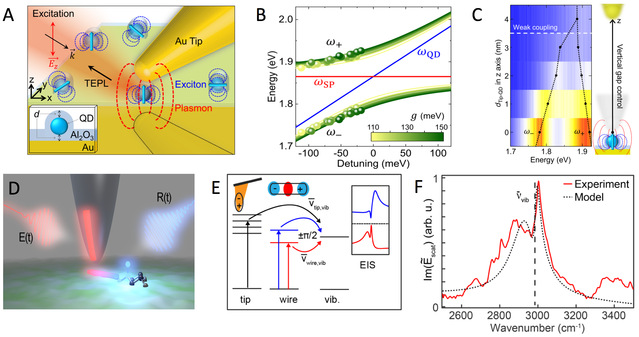报告人:Markus B. Raschke教授
主持人:潘登 研究员
时 间:2021年3月12日上午10:00
地 点:光学大楼B325
报告人简介:
Markus Raschke is Professor at the Departments of Physics, Chemistry, and JILA at the University of Colorado at Boulder. His research is on the development of new nano-scale nonlinear and ultrafast spectroscopy techniques to image and control nanoscale and correlated matter. He received his PhD in 2000 from the Max-Planck Institute of Quantum Optics and the Technical University in Munich, Germany. Following research appointments at the University of California at Berkeley, and the Max-Born-Institute in Berlin, he was on the faculty of the University of Washington, before his appointment at Boulder in 2010. He is fellow of the Optical Society of America, the American Physical Society, and the American Association for the Advancement of Science. He recently won the Bessel award of the Humboldt Foundation, and the Klaus Halbach award for the development of synchrotron infrared nano-spectroscopy. He has collaborated on metrology and laser development with Bruker, Anasys, Horiba, Zurich Instruments, ARS, APE, Vescent, and other companies.
报告内容简介:
Optical cavities can enhance and control the light-matter interaction by modifying the local electromagnetic environment of a quantum emitter. However, large cavity mode volumes have prevented strong coupling of single emitters under ambient conditions. We demonstrate tip-enhanced strong coupling (TESC) spectroscopy,imaging, and control based on scanning probe microscopy using plasmonic antenna-tips forming a nano-cavity with the emitter [1]. With single quantum dots we observe room temperature mode splitting up to 160 meV and anti-crossing in the energy spectra with detuning, with nanometer scale mode confinement, and atomic precision spatial control [2].

Fig. 1. Tip-enhanced near-field nano-cavity strong coupling of single quantum dots (A), with anticrossing (B), and extreme nanometer scale mode confinement (C). In extension to the mid-infrared (D), in configurable coupled tip-antenna coupling (E), observation of electromagnetically induced transparency and absorption (EIT/EIA) (F).
In the extension to the infrared, we achieve strong coupling of molecular vibrations through configurable optical interactions of a nanotip with an infrared resonant nanowire with hybridization and mode splitting [3]. We observe nanotip-induced quantum interference of vibrational excitation pathways in spectroscopic nanoimaging, associated with Purcell enhancement >106 [4]. This work establishes a new paradigm of nano-cavity QED for coherent control of quantum states in solid state emitters and at room temperature [5].
References
[1] K-D Park et al., Nat. Nanotechnol.13, 59 (2018).
[2] K.-D. Park et al., Science Adv. 5, eaav5931 (2019).
[3] E. A. Muller, et al., ACS Photonics5, 3594 (2018).
[4] B. Metzger et al., Phys. Rev. Lett. 123, 153001 (2019).
[5] M. A. May et al. Adv. Quantum Technol. 3,190087 (2020).